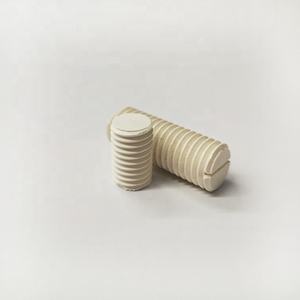Discover Premium Ceramic Products | Durability & Elegance United | Advanced Ceramics
PRODUCT PARAMETERS
Description
Introduction to Alumina Ceramics
Alumina ceramics are known for their high hardness, wear resistance, corrosion resistance, good electrical insulation and high temperature stability. According to the different alumina content, it can be divided into different grades, such as 95 porcelain, 99 porcelain, etc., among which 99 porcelain refers to ceramic materials with an alumina content of 99%. As the alumina content increases, its mechanical strength and electrical insulation properties will also increase accordingly.
Characteristics of Alumina Ceramics
High Hardness: Alumina ceramics have extremely high hardness, which makes it very wear-resistant and suitable for manufacturing abrasive tools and parts that require wear resistance.
Wear resistance: Due to its high hardness, alumina ceramics show excellent wear resistance and are suitable for manufacturing parts for long-term use.
Corrosion resistance: Alumina ceramics have good resistance to most acids and alkalis, making them widely used in the chemical industry.
Good electrical insulation: As an excellent electrical insulating material, alumina ceramics are widely used in electronic and electrical products.
High temperature stability: Ability to withstand extremely high temperatures without significant physical or chemical changes, which makes it an ideal choice for applications in high temperature environments.
Biocompatibility: In the medical field, certain grades of alumina ceramics are used to make medical devices such as artificial joints due to their good biocompatibility.

(95%-99% Alumina Ceramic Part Custom-made Alumina Ceramic Structural Part)
Specifications of 95%-99% Alumina Ceramic Part Custom-made Alumina Ceramic Structural Part
Item Call: Custom-Made Alumina Porcelain Structural Parts (95%-99% Alumina). These components are developed for industrial applications calling for high efficiency. They supply excellent solidity, wear resistance, and thermal security. The alumina material ranges from 95% to 99%. Higher alumina portions boost mechanical toughness and temperature level resistance. The product operates reliably at temperatures approximately 1600 ° C. It resists abrasion, chemical reactions, and thermal shock efficiently. These parts are utilized in electronics, equipment, automobile systems, and medical equipment. Normal applications consist of circuit substrates, cutting devices, pump seals, and surgical elements. Custom shapes and sizes are offered. Options consist of tubes, plates, rods, or facility geometries. Limited resistances as accurate as ± 0.1 mm are achievable. Advanced manufacturing methods like injection molding make certain accuracy. Every batch is checked for top quality. Examinations check thickness, hardness, and measurements. Surface area finishes can be brightened or left harsh based upon requirements. Electrical insulation buildings match high-voltage settings. Efficiency stays regular in destructive or high-heat conditions. Lower alumina qualities (95%) equilibrium price and functionality. Higher qualities (99%) do ideal in extreme setups. These parts function well with metal or plastic assemblies. Compatibility with typical procedures eases installation. Engineers count on them for resilience under stress. Manufacturing timelines depend upon layout complexity. Models are provided for screening before complete orders. Technical assistance helps with product option and design. Manufacturing adheres to ISO requirements for consistency. Parts are lighter than steel alternatives. This cuts system weight without losing stamina. Bio-inert residential or commercial properties make them secure for medical implants. Custom-made creates suit particular machinery demands. This minimizes post-installation modifications. Fast manufacturing options exist for urgent jobs. Making use of these components lowers upkeep costs and enhances equipment lifespan.

(95%-99% Alumina Ceramic Part Custom-made Alumina Ceramic Structural Part)
Applications of 95%-99% Alumina Ceramic Part Custom-made Alumina Ceramic Structural Part
Personalized 95%-99% alumina ceramic structural parts offer essential functions across numerous markets. These components take care of severe conditions because of their high warm resistance, electric insulation, and sturdiness. Electronic devices suppliers use alumina ceramic parts for insulators, substratums, and circuit parts. The material’s low electrical conductivity stops energy loss. Its security under heats makes sure trusted efficiency in tools like sensors and semiconductors.
In the auto market, alumina ceramics improve engine effectiveness and durability. Parts like spark plug insulators, oxygen sensing unit housings, and exhaust system elements endure heats and corrosive gases. The material’s hardness decreases wear in relocating parts. This expands upkeep cycles and decreases operational expenses.
Medical equipment counts on alumina ceramics for biocompatibility and sanitation compatibility. Surgical devices, oral implants, and imaging tool parts benefit from the material’s resistance to chemicals and body fluids. Its smooth surface area protects against microbial development. This makes sure safety in vital healthcare applications.
Aerospace and protection sectors utilize personalized alumina parts for their lightweight stamina. Guidance systems, radar parts, and thermal guards call for materials that sustain extreme stress and temperature changes. Alumina’s thermal security keeps precision in rough atmospheres.
Industrial machinery uses alumina ceramics for wear-resistant cellular linings, cutting devices, and pump seals. The material’s solidity outmatches metals in abrasive setups. This reduces downtime in mining, chemical processing, and power generation.
Customization allows tailored shapes, dimensions, and surface coatings. High-purity alumina (99%) supplies exceptional efficiency in innovative applications. Lower pureness qualities (95%) provide affordable remedies for much less demanding usages. Production approaches like completely dry pushing, shot molding, and extrusion adjust to complicated styles.
These parts fulfill strict criteria for accuracy and dependability. Evaluating ensures resistance to thermal shock, corrosion, and mechanical anxiety. Engineers work carefully with clients to enhance layouts for details functional requirements. This adaptability makes alumina porcelains a useful option for specialized industrial difficulties.
Company Introduction
Advanced Ceramics founded on October 17, 2014, is a high-tech enterprise committed to the research and development, production, processing, sales and technical services of ceramic relative materials and products.. Since its establishment in 2014, the company has been committed to providing customers with the best products and services, and has become a leader in the industry through continuous technological innovation and strict quality management.
Our products includes but not limited to Silicon carbide ceramic products, Boron Carbide Ceramic Products, Boron Nitride Ceramic Products, Silicon Carbide Ceramic Products, Silicon Nitride Ceramic Products, Zirconium Dioxide Ceramic Products, Quartz Products, etc. Please feel free to contact us.(nanotrun@yahoo.com)

Payment Methods
T/T, Western Union, Paypal, Credit Card etc.
Shipment Methods
By air, by sea, by express, as customers request.

5 FAQs of 95%-99% Alumina Ceramic Part Custom-made Alumina Ceramic Structural Part
What is a 95%-99% alumina ceramic part? This type of ceramic part is made from high-purity aluminum oxide. It contains 95% to 99% alumina. The material offers strong mechanical strength and resistance to wear. It handles extreme temperatures and chemicals well. These parts are used in industries needing durable and reliable components. They work in harsh environments without breaking down.
Where are custom alumina ceramic structural parts used? These parts are common in electronics, machinery, and medical devices. They serve as insulators, bearings, or cutting tools. High-temperature furnaces use them for lining or support. Medical equipment relies on their biocompatibility. Industrial machinery uses them for wear-resistant surfaces. They fit applications needing precision and long-lasting performance.
How does the customization process work? Customers provide design specifications. Manufacturers adjust dimensions, shapes, and tolerances. They select the right alumina grade for the job. Production involves molding, sintering, and finishing. Advanced tools ensure accuracy. Engineers test prototypes before mass production. Changes can be made during development. The goal is to match exact requirements.
What advantages do alumina ceramics have over metals or plastics? Alumina ceramics resist corrosion better than metals. They handle higher temperatures than plastics. Their hardness reduces wear over time. They do not conduct electricity, making them ideal for insulation. They last longer in abrasive environments. Maintenance costs are lower due to durability.
Are there handling precautions for alumina ceramic parts? Alumina ceramics are brittle. Avoid impacts during installation. Use soft materials to cushion them. Follow torque guidelines for fasteners. Check alignment to prevent stress cracks. Clean surfaces before assembly. Proper handling ensures they perform as intended. Damaged parts should be replaced immediately.

(95%-99% Alumina Ceramic Part Custom-made Alumina Ceramic Structural Part)
REQUEST A QUOTE
RELATED PRODUCTS
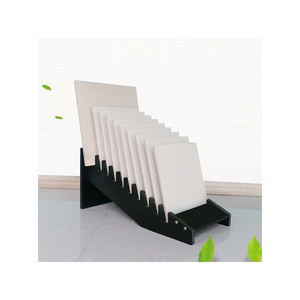
Ceramic Igniter Pellet 300W 230V Alumina Ceramic Heater Pellet Igniter For Biomass Burner
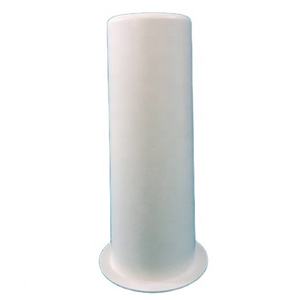
High Brazing Strength Aluminum Oxide Metalized Ceramic Parts

Customized Alumina Ceramic Plates Multi Size 95% to 99.8% Purity Al2O3 Ceramic Plate
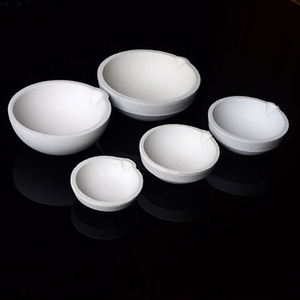
Support Custom Size Alumina Ceramic Parts Aluminum Oxide Ceramic Shaft for Various Kinds of Pumps
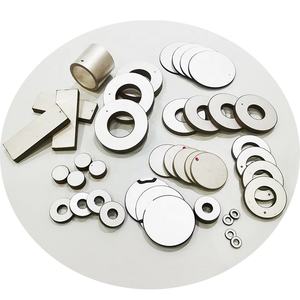
Factory Supply High Temperature 99% Alumina Ceramic Tube
